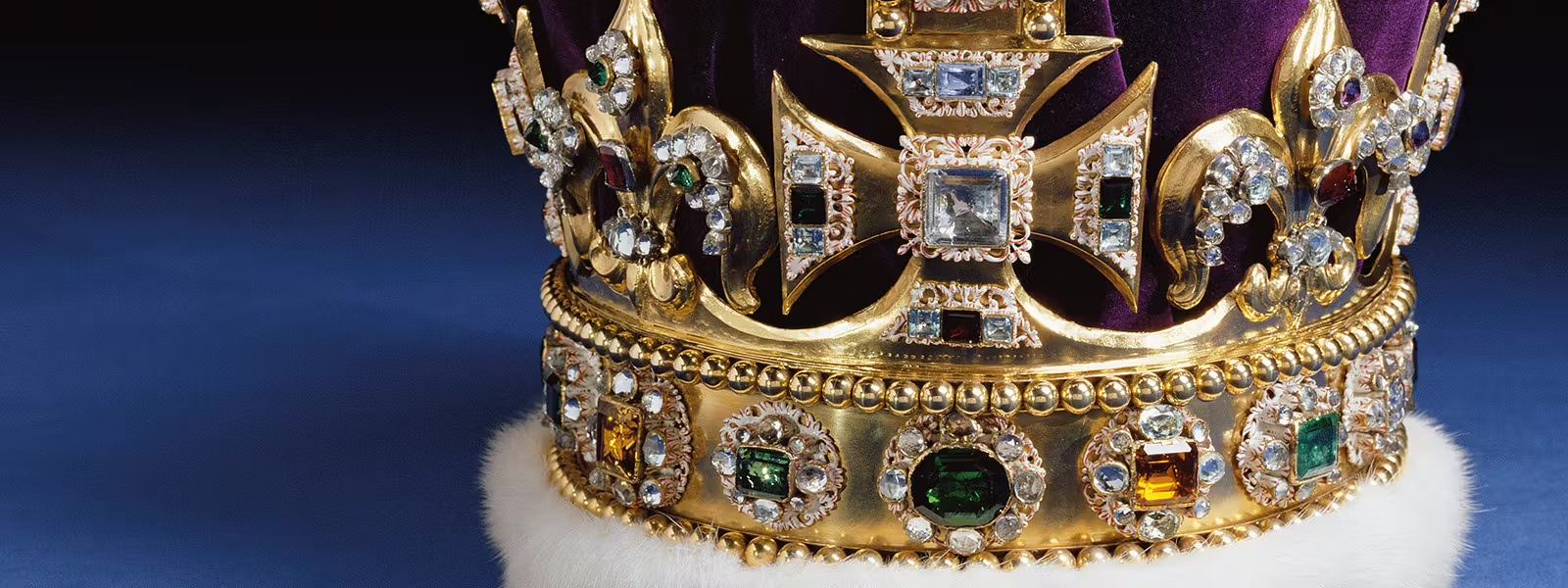The British royal family’s jewels are not just opulent accessories; they are symbols of history, power, and cultural significance. From Queen Elizabeth II to Meghan Markle, these jewels have adorned some of the most influential women in modern history, each piece carrying its own unique story and legacy.
Queen Elizabeth II’s reign has been marked by a collection of jewels that reflect her long-standing position and the history of the British monarchy. The Imperial State Crown, perhaps the most iconic of her jewels, is steeped in history and has been worn at every State Opening of Parliament during her reign. The crown features an impressive 2,868 diamonds, including the famous Cullinan II diamond, which weighs 317.4 carats. This crown is not only a symbol of the monarchy’s grandeur but also a piece of history, with elements dating back to the 14th century.
Another significant piece is the Coronation Necklace and Earrings, originally made for Queen Victoria. This set features the Lahore Diamond, an 8-carat diamond that is a centerpiece of the necklace. Queen Elizabeth II wore this stunning set during her coronation in 1953, and it has since become a hallmark of royal elegance and tradition.

The Vladimir Tiara, with its rich history and Russian heritage, is another standout piece. Originally owned by Grand Duchess Maria Pavlovna of Russia, it was smuggled out of Russia during the revolution and eventually sold to Queen Mary. The tiara, which can be worn with pearls or emeralds, has been a favorite of Queen Elizabeth II, who often opts for the versatile piece for state occasions.
Princess Diana’s Influence
Princess Diana brought a fresh approach to royal jewels, blending tradition with modernity. Her most famous piece, the Sapphire Engagement Ring, continues to captivate the public’s imagination. Featuring a 12-carat oval blue Ceylon sapphire surrounded by 14 solitaire diamonds, this ring broke with royal tradition by being available for public purchase from Garrard’s catalog. This choice reflected Diana’s modern and accessible approach to royal fashion.
The Spencer Tiara, a family heirloom, was worn by Diana on her wedding day in 1981. This tiara, with its intricate floral and heart-shaped design, became synonymous with Diana’s style. Unlike many royal jewels, the Spencer Tiara belonged to Diana’s family rather than the royal collection, highlighting her personal connection to her heritage.
Diana’s impact on royal jewels extended beyond her lifetime. Her penchant for wearing chokers as headbands and her innovative combinations of modern and classic pieces influenced subsequent generations, ensuring her legacy lived on in the realm of royal fashion.
Modern Royals: Kate Middleton and Meghan Markle
Kate Middleton, now the Princess of Wales, has continued the tradition of wearing royal jewels while adding her own touch. One of her most significant pieces is the Cambridge Lover’s Knot Tiara, which was a favorite of Princess Diana. This tiara, featuring 19 arches and 38 drop-shaped pearls, has become a signature piece for Kate, often seen during state banquets and formal events.
Kate’s engagement ring, which once belonged to Diana, has further cemented her connection to her late mother-in-law. The ring, with its deep blue sapphire and diamond halo, has become one of the most recognized pieces of jewelry in the world, symbolizing continuity and remembrance within the royal family.
Meghan Markle brought a more minimalist and contemporary style to the royal jewel collection. Her engagement ring, designed by Prince Harry, features a central diamond sourced from Botswana, flanked by two smaller diamonds from Princess Diana’s collection. This blend of personal significance and historical connection exemplifies Meghan’s approach to royal jewels: meaningful, modern, and mindful of heritage.
The Queen Mary Diamond Bandeau, worn by Meghan at her wedding, was a striking choice. This Art Deco piece, originally crafted in 1932 to accommodate a detachable brooch, was loaned to Meghan by Queen Elizabeth II. Its clean lines and understated elegance suited Meghan’s minimalist aesthetic and bridged the gap between historical significance and modern style.
Jewels in Royal Events and Their Future
Royal jewels play a pivotal role in ceremonies, state events, and public appearances. They are not mere adornments but symbols of the monarchy’s enduring legacy. Coronations, state banquets, and royal weddings often feature the most opulent and significant pieces, each chosen for its historical relevance and visual impact.
The future of royal family jewels will likely see a blend of tradition and innovation. As newer generations take on royal duties, they may introduce contemporary styles and preferences while honoring the historical significance of these priceless heirlooms. Efforts to preserve these treasures for future generations are paramount, ensuring they continue to tell the story of the British monarchy.
In conclusion, the jewels of the British royal family, from Queen Elizabeth II to Meghan Markle, encapsulate centuries of history, tradition, and personal stories. These pieces are not only valuable for their material worth but also for their cultural and historical significance, continuing to captivate and inspire the world.
